Nurturing Tableware: Finding Beauty in Everyday Use
Nov 13,2014
Nurturing Tableware: Finding Beauty in Everyday Use
Nov 13,2014
Wherever you go in Japan, you’ll find pieces of tableware with a character all their own. They reflect the country’s cultural diversity and the vision of the artists who made them. Their presence adds sparkle to everyday surroundings. In this series, the owner of a tableware gallery showcases tableware that brightens your day and lends color to the season.
In this installment, Eto Aya, proprietor of the gallery Natsutsubaki, talks about nurturing your tableware. She describes how their appeal evolves over time as you use them.
When you peer into a favorite Japanese tea mug you’ve used for ages, you may notice that a web of cracks has formed in the glaze where the color of the green tea has penetrated. This pattern is called kannyu or “crackle.”
“Crackle is a feature unique to ceramics. Ceramics undergo changes in the course of constant use. Any item of crockery regularly filled with dark-colored liquids like green tea, coffee, or dipping sauce is especially likely to develop crackle. That includes teacups, mugs, teapots, and the container you dip your soba noodles in,” Aya explains.
“Dishes evolve in different ways depending on the person using them. Crackle is an excellent example. The neat thing about ceramics is that they increasingly take on their own personality as you use them over the years. That’s why you become so attached to them.”
Crackle is particularly common on ceramics with a transparent glaze over a white slip — what is called kohiki. But any form of pottery will gradually undergo changes over years of use. Those changes are something to enjoy.
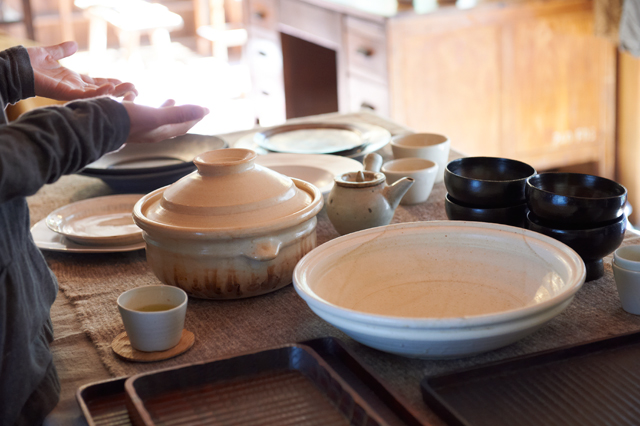
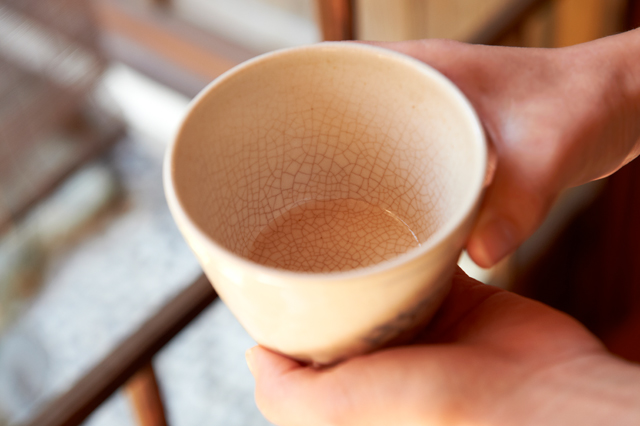
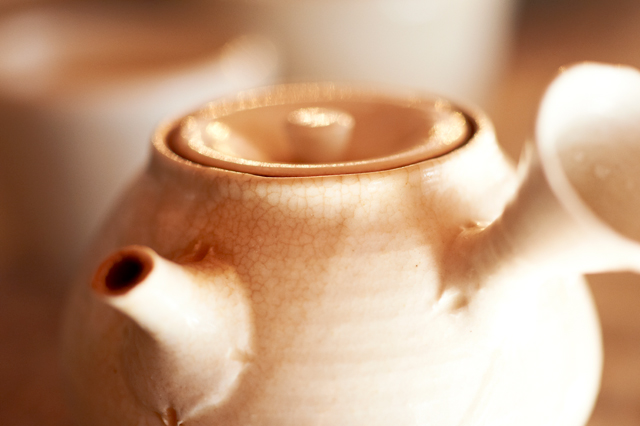
Lacquerware is another case in point of how pieces can evolve with years of use.
“One of lacquerware’s traits is that it becomes increasingly transparent over time,” Aya says. “For that reason, lacquered items that have been lovingly used for years may acquire a lustrous tone. Or the hues of the coats of lacquer below the surface or the color of the wooden core underneath may start to show. That enhances the elegance of the piece. What’s more, lacquerware becomes stronger and more resilient with time.”
Lacquerware comes in many different colors, and there are many different lacquering techniques. One technique is that of tamenuri. This involves applying an undercoat of red lacquer, then an overcoat of clear lacquer. The resulting delicate hue is a pleasure to behold. The overcoat doesn’t possess a high degree of transparency when initially applied, and the lacquered item appears black at first. As the months and years pass, however, the overcoat becomes increasingly transparent, revealing the vermilion beneath and giving the color tone greater depth. This technique capitalizes on the characteristic way that lacquerware changes over time.
Conversely, if you want a piece of lacquerware restored to its original color, just ask the artist who made it. That’s another advantage of the medium.
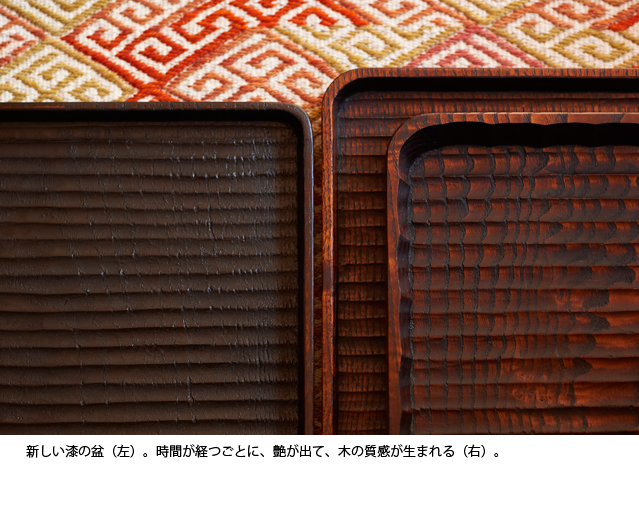
Left: A new lacquerware tray. Right: It will become increasingly lustrous over time, assuming a wood-like texture.

Plates with a tarnished silver glaze by Ito Kan, replicating the texture of bronze. They take on a softer tone with use, which adds to their charm.
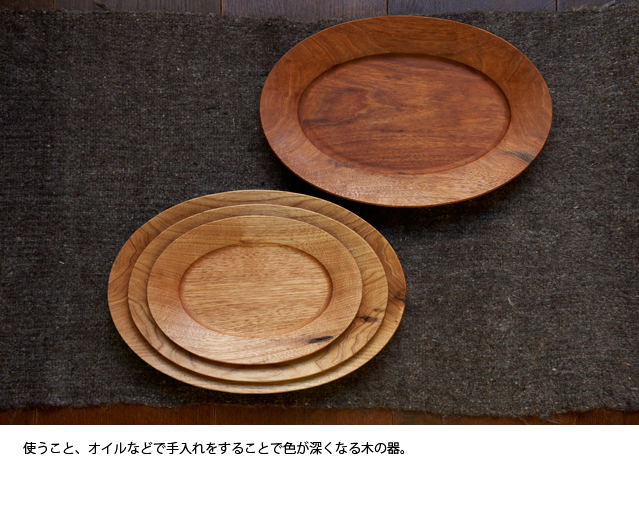
Wooden plates assume a deeper tone as you use them and treat them with oil.
When a vessel is chipped or broken, it can be mended using a traditional technique called kintsugi. This involves gluing the pieces together with lacquer. The artist’s individual flair displays itself in how the mended item turns out. It’s where they get to show their stuff. Depending on the color, shape, and other features of the object, they may play up the hue of the lacquer used or sprinkle on gold, silver, or platinum powder as a finishing touch. Kintsugi is a profound art. The piece may acquire an additional charm that it didn’t have before it was mended. It may even be reincarnated as something new.
Customers sometimes drop off objects to be mended at Natsutsubaki.
“People arrive with all sorts of stuff. Someone may turn up with an antique they’ve treasured for years. Or they may bring a cartoon character tea mug that their child used when they were little. For them, kintsugi is a way to restore a favorite item to its former beauty, to preserve cherished memories. I think that’s a wonderful thing. An article mended in this fashion shows its owner’s commitment to taking good care of it. Their attachment to it only grows after it’s been repaired.”
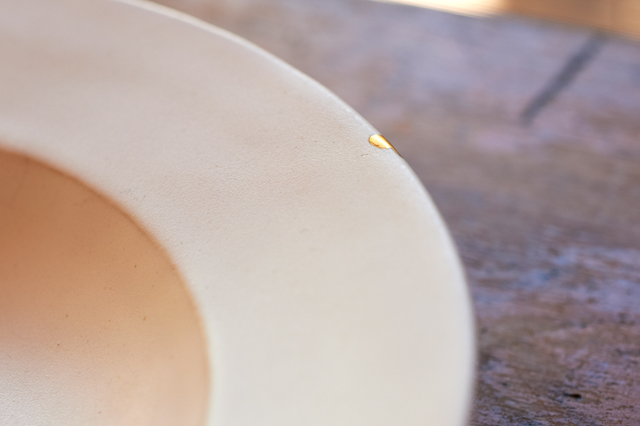
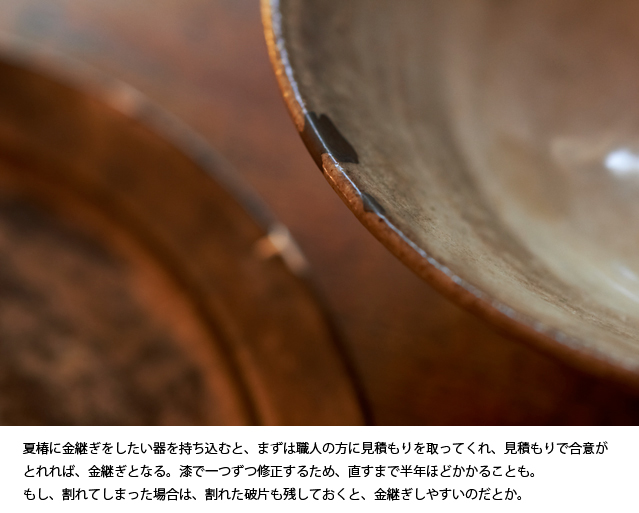
When you bring in an item to Natsutsubaki to be mended, first they will get you a price quote from the kintsugi artist. If you agree to the price, the kintsugi process begins. The job may take up to six months to complete, since cracks and breaks are repaired one by one with lacquer. If you break an item, keeping the broken pieces makes it easier to mend.
“We’ve been talking about nurturing tableware, but the same holds true of furniture, for example. Take wooden furniture finished with natural oils. As you use it, the edges become naturally rounded, and it takes on a different hue, enhancing its elegance. If it becomes worn and frayed, you can treat it by, say, applying oil. Your furniture will then grow more beautiful with age. The same can be said of pottery. Because pottery is made of natural materials, it changes over time. Those changes are something you should take pleasure in. When you treasure an object, it changes in ways unique to you. You then become further attached to it and treasure it all the more.”
The same can perhaps be said of people, Aya adds.
“People too become more interesting with the passage of time. For example, being changed by all the things that have happened to you and all the new people you’ve met over the course of, say, a decade gives you more depth as a person than if you were completely unchanged. Friends who have gone through changes together grow fonder of each other, and their friendship endures. With items of tableware as with people, it’s fun to watch how they change over the years you spend together.”